Related Research Articles
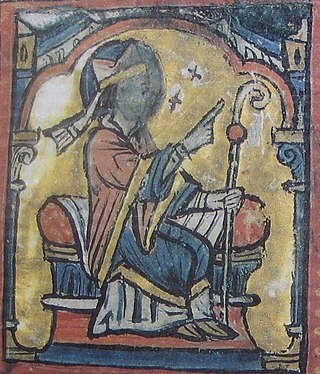
Pope Clement III, was the head of the Catholic Church and ruler of the Papal States from 19 December 1187 to his death in 1191. He ended the conflict between the Papacy and the city of Rome, by allowing the election of magistrates, which reinstalled the Papacy back in the city after a six year exile. Clement, faced with a deplete college of cardinals, created thirty-one cardinals over three years, the most since Hadrian IV. He died 20 March 1191 and was quickly replaced by Celestine III.
Pope Gregory VIII, born Alberto di Morra, was head of the Catholic Church and ruler of the Papal States for two months in 1187. Becoming Pope after a long diplomatic career as Apostolic Chancellor, he was notable in his brief reign for reconciling the Papacy with the estranged Holy Roman Empire and for initiating the Third Crusade.

Year 1187 (MCLXXXVII) was a common year starting on Thursday of the Julian calendar.

The Third Crusade (1189–1192) was an attempt led by three European monarchs of Western Christianity to reconquer the Holy Land following the capture of Jerusalem by the Ayyubid sultan Saladin in 1187. For this reason, the Third Crusade is also known as the Kings' Crusade.

The Battle of Hattin took place on 4 July 1187, between the Crusader states of the Levant and the forces of the Ayyubid sultan Saladin. It is also known as the Battle of the Horns of Hattin, due to the shape of the nearby extinct volcano of that name.
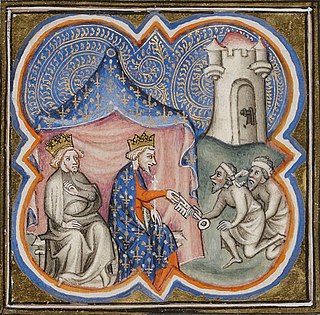
The siege of Acre was the first significant counterattack by Guy of Jerusalem against Saladin, leader of the Muslims in Syria and Egypt. This pivotal siege formed part of what later became known as the Third Crusade. The siege lasted from August 1189 until July 1191, in which time the city's coastal position meant the attacking Latin force were unable to fully invest the city and Saladin was unable to fully relieve it with both sides receiving supplies and resources by sea. Finally, it was a key victory for the Crusaders and a serious setback for Saladin's ambition to destroy the Crusader states.
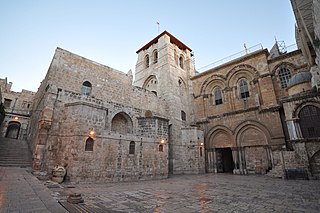
The crusading movement was a framework of ideologies and institutions that described, regulated, and promoted the Crusades. These were a series of religious wars initiated, supported, and sometimes directed by the Christian Latin Church in the Middle Ages. Members of the Church defined the movement in legal and theological terms based on the concepts of holy war and pilgrimage. Theologically, the movement merged ideas of Old Testament wars that were instigated and assisted by God with New Testament ideas of forming personal relationships with Christ. Crusading was a paradigm that grew from the encouragement of the Gregorian Reform of the 11th century and the movement declined after the Reformation. The ideology continued after the 16th century, but in practical terms dwindled in competition with other forms of religious war and new ideologies.

The siege of Jerusalem lasted from 20 September to 2 October 1187, when Balian of Ibelin surrendered the city to Saladin. Earlier that summer, Saladin had defeated the kingdom's army and conquered several cities. Balian was charged with organizing a defense. The city was full of refugees but had few soldiers. Despite this fact the defenders managed to repulse several attempts by Saladin's army to take the city by storm. Balian bargained with Saladin to buy safe passage for many, and the city was peacefully surrendered with limited bloodshed. Though Jerusalem fell, it was not the end of the Kingdom of Jerusalem, as the capital shifted first to Tyre and later to Acre after the Third Crusade. Latin Christians responded in 1189 by launching the Third Crusade led by Richard the Lionheart, Philip Augustus, and Frederick Barbarossa separately. In Jerusalem, Saladin restored Muslim holy sites and generally showed tolerance towards Christians; he allowed Orthodox and Eastern Christian pilgrims to visit the holy sites freely—though Frankish pilgrims were required to pay a fee for entry. The control of Christian affairs in the city was handed over to the patriarch of Constantinople.

The Crusades were a series of religious wars initiated, supported, and sometimes directed by the Christian Latin Church in the medieval period. The best known of these military expeditions are those to the Holy Land in the period between 1095 and 1291 that were intended to reconquer Jerusalem and its surrounding area from Muslim rule. Beginning with the First Crusade, which resulted in the conquest of Jerusalem in 1099, dozens of military campaigns were organised, providing a focal point of European history for centuries. Crusading declined rapidly after the 15th century.
Joscius was Archbishop of Tyre in the crusader Kingdom of Jerusalem in the late 12th century.
A crusade bull or crusading bull was a papal bull that granted privileges, including indulgences, to those who took part in the Crusades against infidels. A bull is an official document issued by a pope and sealed with a leaden bulla. All crusade bulls were written in Latin. Those launching a new general crusade were encyclicals addressed to all the archbishops of the Latin Church.

The December 1187 papal election was convoked after the death of Pope Gregory VIII. It resulted in the election of Cardinal Paolo Scolari, who took the name of Clement III.
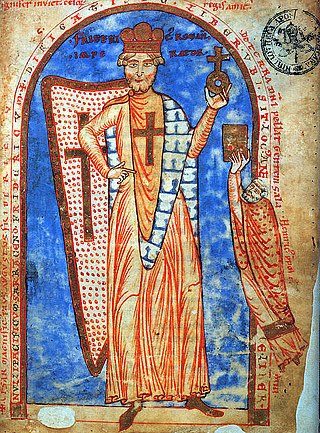
The Curia Christi or Curia Dei was a diet or court day (Hoftag) of the Holy Roman Empire held in Mainz on 27 March 1188. It was so called because it was notionally under the presidency of Jesus Christ as king of kings. It was the occasion both for the public resolution of the conflict between Emperor Frederick Barbarossa and Archbishop Philip of Cologne and for the emperor's "taking of the cross", when he vowed to lead an army on the Third Crusade.
The Battle of Iconium took place on May 18, 1190, during the Third Crusade, in the expedition of Frederick Barbarossa to the Holy Land. As a result, Iconium, the capital city of the Sultanate of Rûm under Kilij Arslan II, fell to the Imperial forces.

Post miserabile is an encyclical issued by Pope Innocent III on 15 August 1198 calling for what would subsequently be referred to as the Fourth Crusade. It was Innocent's first crusade bull, although it was not issued in response to any single event, such as setback in the East. Compared to the crusade-related encyclicals written by his predecessors, Post miserabile is more organisational in tone, foreshadowing the bureaucratic and administrative changes Innocent would make to the crusading institutions.

Pietro Diani was an Italian cardinal. The name "Diana" is incorrect; he signs himself Petrus Dianus.

Quia maior is a papal bull issued by Pope Innocent III in April 1213. In it, Innocent presents crusading as a moral obligation for all Christians and lays out his plan to recapture Jerusalem and the rest of the Holy Land from the Muslims. The longest of the three crusade-related letters that Innocent issued in the same month, it laid the foundation for the Fifth Crusade, which was formally approved by the Fourth Lateran Council in November 1215. Quia maior has since been recognised by historians as one of the most important medieval papal bulls on crusading.
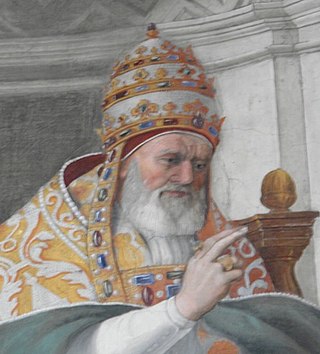
Rachel suum videns is a papal bull issued by Pope Gregory IX on 17 November 1234 calling for a crusade to the Holy Land and ordering Dominicans and Franciscans to preach in favour of it. It was issued before the truce between Frederick II, Holy Roman Emperor and the Egyptian Sultan, Al-Kamil, was due to expire.
The History of the Expedition of the Emperor Frederick is an anonymous Latin account of the campaign waged by Frederick I, Holy Roman Emperor, as part of the Third Crusade. It covers the period 1187–1196, but is centred on the expedition of 1189–1190.

The siege of Alcácer do Sal lasted from 30 July to 18 October 1217. The well fortified city of Alcácer do Sal was a frontier outpost of the Almohad Caliphate facing Portugal. It was besieged by forces from Portugal, León, the military orders and the Fifth Crusade. The latter were led by Count William I of Holland. The expedition was the brainchild of Bishop Soeiro II of Lisbon, whose diocese was threatened by regular raids from Alcácer. King Afonso II of Portugal did not take part in person, but the city was incorporated into his kingdom after its capitulation. The crusaders who took part in the siege, mainly from the Rhineland and the Low Countries, did so without papal authorization and were afterwards ordered to continue on to the Holy Land.
References
Citations
- 1 2 3 4 Bird, Peters & Powell 2014, p. 4.
- ↑ Smith 2018, p. 66.
- ↑ Tyerman 2007, p. 376.
- 1 2 Cole 1991, p. 65.
- ↑ Smith 2018, p. 65.
- ↑ Smith 2018, p. 67.
- ↑ Smith 2018, p. 63.
- 1 2 3 Phillips 2013, p. 138.
- ↑ Cole 1991, p. 64.
- ↑ Cole 1991, pp. 64–65.
- ↑ Smith 2018, p. 86.
- ↑ Smith 2018, p. 64.
- ↑ Cole 1991, p. 63.
Works cited
- Bird, Jessalynn; Peters, Edward; Powell, James M. (2014). Crusade and Christendom: Annotated Documents in Translation from Innocent III to the Fall of Acre, 1187–1291. University of Pennsylvania Press. ISBN 9780812223132.
- Cole, Penny J. (1991). The Preaching of the Crusades to the Holy Land, 1095–1270. The Medieval Academy of America. ISBN 0915651033.
- Phillips, Jonathan (2013). The Crusades 1095–1197. Taylor & Francis. ISBN 9781317881360.
- Smith, Thomas W. (2018). "Audita Tremendi and the Call for the Third Crusade Reconsidered, 1187–1188". Viator. 49 (3): 63–101. doi:10.1484/J.VIATOR.5.119574. S2CID 216914511.
- Tyerman, Christopher (2007). God's War: A New History of the Crusades. Penguin UK. ISBN 9780140269802.